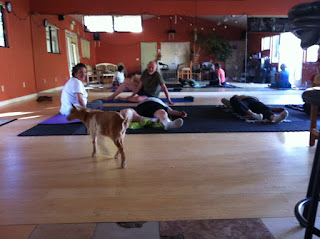This interesting article by Feldenkrais practitioner Kathy James gives us insight into how our protective habits may actually interfere with recovery from injury or chronic pain. Kathy also illustrates how using Feldenkrais gives you new, effective and accessible tools to manage your pain and recovery. Thanks for reading! Carole Bucher, BA, GCFT
MOVING OUT OF PAIN -- THE FELDENKRAIS WAY We all experience physical aches and pains at some time or another. Some of these are acute (from an injury or accident), while others may stay with us or develop over time (chronic). If you’re like many others, you may have had the experience that your physical pain is aggravated by movement—which is accurate: Our body’s natural response to pain is often to increase muscular tension, restrict movement, and make postural changes to guard or protect the painful area. But sometimes this natural protective response, while serving an important purpose in the short term, can actually create different, and more complicated, problems over the long term.
It’s worthwhile noting that dealing with chronic pain is usually more challenging than acute problems. We are now learning that this is because chronic pain follows different pathways in the nervous system than acute pain—which explains why pain medication that alleviates acute pain often doesn’t have the same effect on chronic pain.
Fortunately, there are a variety of alternative approaches to chronic pain that may be effective, and which don’t entail costly drugs or surgery. As a Feldenkrais teacher, my perspective is generally to start with the basics: How is a person moving—walking, sitting, standing, and how might their habitual (unconscious) movement patterns be contributing or even causing the pain.
Let’s take Mary as an example… Mary limped into my office complaining about severe pain in her right hip when she walked. She often woke in the middle of the night with pain, but couldn’t figure out what was causing it. Although she had broken her ankle (and had surgery for it) three years earlier, that couldn’t be the cause of her hip pain, could it?
I first asked Mary to walk back and forth a few times, so that I could observe how she moved. I then asked her if she noticed how differently each of her legs swung when she walked, and how she always placed her right foot way off to the side, while the left foot came down right under her hip? She was surprised to realize that she was doing that, and commented that this was exactly how she had walked when her leg was in a cast after her ankle surgery.
In other words, Mary was walking today, three years later, as if her ankle were still broken and in a cast. Though her ankle injury had long since healed, the habitual way she had compensated for this injury had continued, and was now causing problems with Mary’s hips. At some point, she might well start feeling pain in her spine, or even neck, if this habitual pattern of movement continued.
The key word in all of this is “habitual.” Our bodies have tremendous wisdom, and will often (if we listen) inform us how best to respond to life’s immediate challenges. But sometimes we continue responding the same way long after the immediate challenge is over. This is clearly what was happening with Mary.
Over the next several sessions, Mary and I worked on helping her to sense and feel her habitual movement patterns more clearly, and to practice new ways of moving that were easier and more comfortable for her. Just by focusing her attention on what she was doing, Mary started feeling differences almost immediately. Pretty soon her limp had disappeared and she was walking normally again. Without all of the added strain of having to walk in such a lopsided way, her hip pain also vanished, letting her sleep through the night comfortably.
Most of us take our movement for granted. We do what we do, and we do it the same way, every day. The next few times you stand up from your chair or sofa, pay attention to how you actually do it—how you shift your weight, where you put your feet, how you use your head, what you do with your hands. You’ll probably notice that you do it the same way every time. Is this a problem? Not necessarily, since we all need to be able to do some things without thinking too much about them. But it may be a problem if you’re caught in a cycle of pain, discomfort or limitation that just doesn’t seem to go away. In that case, becoming aware of these habits, and learning new ways of moving, with greater balance and ease, may be exactly what your body is asking for.

